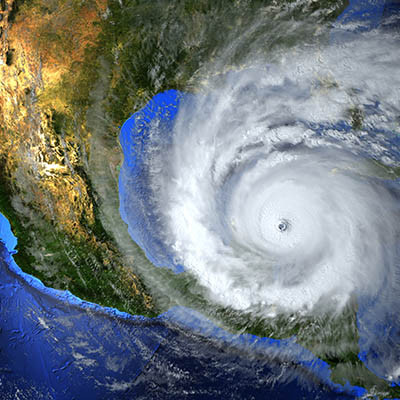Directive Blogs
In the Wake of Hurricane Beryl, Consider Business Continuity
In the wake of Hurricane Beryl, businesses have another reason to reflect on data backup, disaster recovery, and business continuity. Since the hurricane made landfall in Texas, despite being downgraded to a tropical storm, it still caused over $5 million in damage to islands across middle America.
Hurricanes can cause significant damage and loss of life, and we would like to express our deepest best wishes to anyone who may have been impacted by the situation. While we hope that you made it out of Beryl unscathed, the same might not be said for your business’ technology and data systems.
We can learn about data backup and business continuity from this situation, specifically what it is, and reflect on why it’s required.
Understanding Business Continuity
In its most basic terms, business continuity is ensuring that you can maintain a certain level of operations, even under the worst possible conditions.
The idea of business “disasters” doesn’t amount to natural ones like a hurricane. It includes so much more that you don’t have much control over. You need to be ready to respond to these situations that might prevent your business from functioning as it needs to. Three-quarters of companies without a business continuity plan fail within three years of suffering from a disaster.
If this isn’t sobering enough, I don’t know what is.
Data backup is only one part of your business continuity strategy. We’ll go over some of the specifics of what you should aim for today.
How to Build Your Business Backup Strategy
To prepare your business’ backup plan, consider the following questions:
How many backups will you maintain?
You should have several backups in place that you can restore from, as you can never rely on one singular copy. You never know if it will be available, reliable, or configured appropriately. Maintain multiple backups so you have a dependable backup at all times.
Where are your backups stored?
You should store your backups in multiple locations, including at least one copy on-site and one off-site, preferably in the cloud. This ensures that your data will always be protected, even if one of your backups is destroyed by a disaster.
How often are backups taken?
You should take full advantage of backup tools that allow for incremental data backup. This will allow you to rewrite data that has changed since the last scan rather than rewriting the entire backup. These smaller-scale backups can occur as often as every 15 minutes, making them more reliable and less prone to data loss than the large, end-of-day backups that have traditionally been done in the past.
Implement Business Continuity and Data Backup Today
Your business shouldn’t have to suffer from a disaster, natural or otherwise. Business continuity and data backup address this pain point. Learn more about what we can do to preserve your business by calling us today at 607.433.2200.


